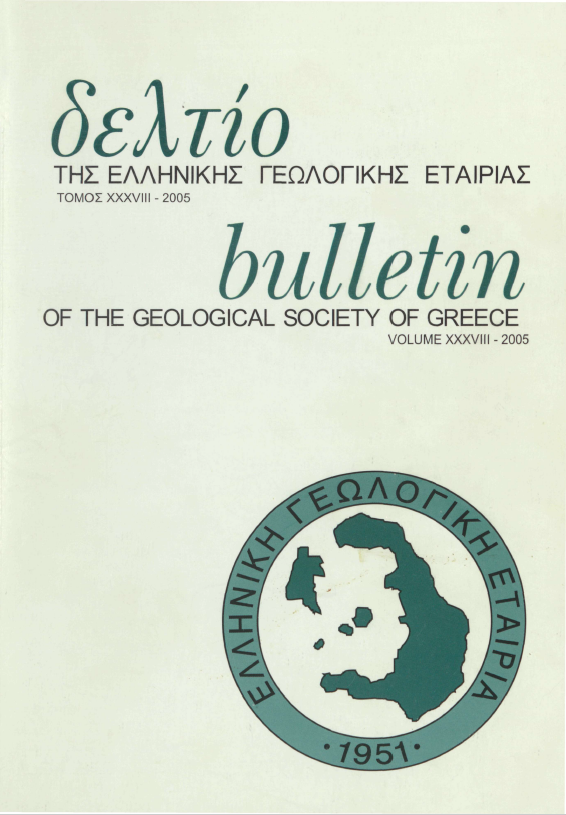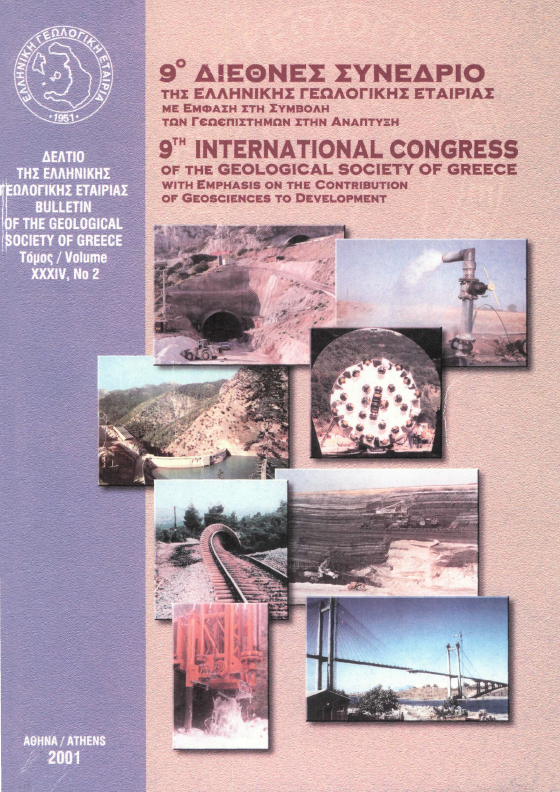CONTROLS OF REGIONAL GEOLOGY AND TECTONICS ON THE EVOLUTION OF THE DRAINAGE NETWORK AND BASIN OF RIVER PAMISOS IN THESSALY, CENTRAL GREECE
Abstract
River Pamisos is a main tributary of Pinios River, draining the SW part of the Thessaly catchment area. The river's drainage basin comprises part of the plain as well as of the mountainous terrain that bounds the broader Thessaly Plain. In this paper we present the results of both qualitative and quantitative analyses of the drainage network and morphology through processing of digitized data with GIS software. Quantitative measurements allowed objectively to compare different landforms and to calculate less straightforward parameters (geomorphic indices) that may be useful for the identifying particular characteristics of the area, such as the level of tectonic activity and geologic conffiocm the analysis of the hydrographie network values for the D and F parameters were calculated. In addition, terrain analysis resulted in useful conclusions about morphologic indices, derivation of hypsographic curves and integrals for the entire study area. Similarly, the morphological study of fluvial terraces together with that of sub-basins resulted in determination of erosive activity of the river. Finally, the analysis of certain morphometric indices obtained from the hydrographie network and morphology subsequent analyses was used to define the influence of geologic formations and tectonics upon the evolution of the river system. One of the major results of this paper is that the shape of the hypsometric curve and the calculation of the hypsometric integral indicate a mature stage of development for the Pamissos River drainage basin. It is generally known that the landscape in recently developed - active orogens is shaped mainly by two factors, tectonic activity and surface erosion. If we accept that the denudation – erosion rates in Hellenic orogen are approximately the same, then the lack of landmass (indicated by hypsometric integral) should implicate a basin expansion due to tectonic control.
Article Details
- How to Cite
-
ΒΟΥΒΑΛΙΔΗΣ Κ., ΣΦΕΙΚΟΣ Α., ΠΑΡΑΣΧΟΥ Θ., ΚΕΧΑΓΙΑ Χ., & ΨΩΜΙΑΔΗΣ Δ. (2005). CONTROLS OF REGIONAL GEOLOGY AND TECTONICS ON THE EVOLUTION OF THE DRAINAGE NETWORK AND BASIN OF RIVER PAMISOS IN THESSALY, CENTRAL GREECE. Bulletin of the Geological Society of Greece, 38, 86–100. https://doi.org/10.12681/bgsg.18428
- Section
- Geomorphology

This work is licensed under a Creative Commons Attribution-NonCommercial 4.0 International License.
Authors who publish with this journal agree to the following terms:
Authors retain copyright and grant the journal right of first publication with the work simultaneously licensed under a Creative Commons Attribution Non-Commercial License that allows others to share the work with an acknowledgement of the work's authorship and initial publication in this journal.
Authors are able to enter into separate, additional contractual arrangements for the non-exclusive distribution of the journal's published version of the work (e.g. post it to an institutional repository or publish it in a book), with an acknowledgement of its initial publication in this journal. Authors are permitted and encouraged to post their work online (preferably in institutional repositories or on their website) prior to and during the submission process, as it can lead to productive exchanges, as well as earlier and greater citation of published work.







